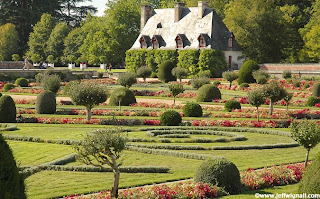
Most of the time I try to make my photos as sharp as possible and go to considerable pains to be sure that they are sharp. Occasionally though I like to intentionally soften an image just to give it a somewhat romantic and gentler look. In the photo of two men fishing, for example, I liked the sharp version, but experimented with a blur filter and ended up liking the new look.
If you're editing in Photoshop the simplest way to soften an image is to use the Gaussian Blur filter.
Using Gaussian Blur is very simple: you just apply it to the image and adjust the degree of softness that you want. But there is a more sophisticated way to control the balance between sharpness and blur:
1. Call up the original image and do all of your color and exposure corrections.
2. Using "Command J" (Mac; Option J in Windows), duplicate that layer.
3. Go to the filters menu and apply the Gaussian Blur to the
duplicate layer.4. Go to the "Opacity" slider (top right of the layers panel) and adjust the opacity of the blur layer until you get just the degree of softness you're after. The opacity slider lets you reveal the original image and blend it with the soft image according to the degree of opacity you're using. At 100% opacity, none of the original sharp image is showing through. At 50% opacity, the image is an even mix of soft and sharp files. In this case the opacity was around 40%, meaning that the image was a mix of 60% sharp and 40% blur layers.
5. Optionally, experiment with some of the "Layer Blending Modes" (top left of the layers panel) and see if a different blending mode produces an effect you like more.
6. Save the file with layers open in case you want to play with the image again later, then using a different file name, save a flattened version.
The use of a duplicate layer allows you to bring up some of the sharpness from the original image layer and have much more control over the degree of blur in the final image. In fact, I often use duplicate layers for adjustments so that I can blend them more precisely with original image.
 For some reason signs always seem to catch my eye when I'm traveling--but then again, I guess that's why people put up signs. Duh! What really catches my eye though are the funny signs. Some signs, like the one for a "new, safe heat treatment" that I found (in English, oddly enough) in Paris is meant to be funny. Paris had had a long, hot summer and the whole country was suffering serious heat problems. This ice cream vendor decided that he had the secret treatment for all of that heat: eat more ice cream (I couldn't agree more).
For some reason signs always seem to catch my eye when I'm traveling--but then again, I guess that's why people put up signs. Duh! What really catches my eye though are the funny signs. Some signs, like the one for a "new, safe heat treatment" that I found (in English, oddly enough) in Paris is meant to be funny. Paris had had a long, hot summer and the whole country was suffering serious heat problems. This ice cream vendor decided that he had the secret treatment for all of that heat: eat more ice cream (I couldn't agree more).





























